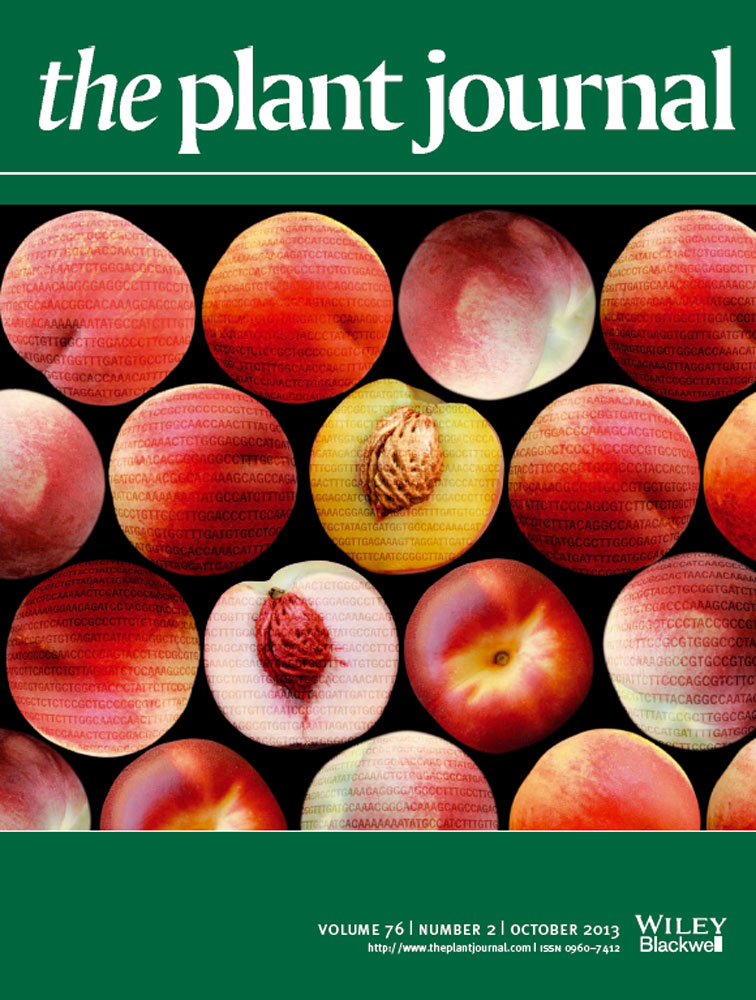Ver ítem
- xmlui.general.dspace_homeCentros e Institutos de InvestigaciónCICVyA. Centro de Investigación en Ciencias Veterinarias y AgronómicasInstituto de GenéticaArtículos científicosxmlui.ArtifactBrowser.ItemViewer.trail
- Inicio
- Centros e Institutos de Investigación
- CICVyA. Centro de Investigación en Ciencias Veterinarias y Agronómicas
- Instituto de Genética
- Artículos científicos
- Ver ítem
LOV‐domain photoreceptor, encoded in a genomic island, attenuates the virulence of Pseudomonas syringae in light‐exposed Arabidopsis leaves
Resumen
In Arabidopsis thaliana, light signals modulate the defences against bacteria. Here we show that light perceived by the LOV domain‐regulated two‐component system (Pst–Lov) of Pseudomonas syringae pv. tomato DC3000 (Pst DC3000) modulates virulence against A. thaliana. Bioinformatic analysis and the existence of an episomal circular intermediate indicate that the locus encoding Pst–Lov is present in an active genomic island acquired by horizontal transfer.
[ver mas...]
In Arabidopsis thaliana, light signals modulate the defences against bacteria. Here we show that light perceived by the LOV domain‐regulated two‐component system (Pst–Lov) of Pseudomonas syringae pv. tomato DC3000 (Pst DC3000) modulates virulence against A. thaliana. Bioinformatic analysis and the existence of an episomal circular intermediate indicate that the locus encoding Pst–Lov is present in an active genomic island acquired by horizontal transfer. Strains mutated at Pst–Lov showed enhanced growth on minimal medium and in leaves of A. thaliana exposed to light, but not in leaves incubated in darkness or buried in the soil. Pst–Lov repressed the expression of principal and alternative sigma factor genes and their downstream targets linked to bacterial growth, virulence and quorum sensing, in a strictly light‐dependent manner. We propose that the function of Pst–Lov is to distinguish between soil (dark) and leaf (light) environments, attenuating the damage caused to host tissues while releasing growth out of the host. Therefore, in addition to its direct actions via photosynthesis and plant sensory receptors, light may affect plants indirectly via the sensory receptors of bacterial pathogens.
[Cerrar]

Autor
Moriconi, Victoria;
Sellaro, Romina Vanesa;
Ayub, Nicolás Daniel;
Soto, Gabriela;
Rugnone, Matias Leandro;
Shah, Rashmi;
Pathak, Gopal P.;
Gärtner, Wolfgang;
Casal, Jorge José;
Fuente
Plant Journal 76 (2) : 322-331 (October 2013)
Fecha
2013-10
Editorial
Wiley
ISSN
0960-7412
1365-313X
1365-313X
Formato
pdf
Tipo de documento
artículo
Palabras Claves
Derechos de acceso
Restringido
 Excepto donde se diga explicitamente, este item se publica bajo la siguiente descripción: Creative Commons Attribution-NonCommercial-ShareAlike 2.5 Unported (CC BY-NC-SA 2.5)
Excepto donde se diga explicitamente, este item se publica bajo la siguiente descripción: Creative Commons Attribution-NonCommercial-ShareAlike 2.5 Unported (CC BY-NC-SA 2.5)

